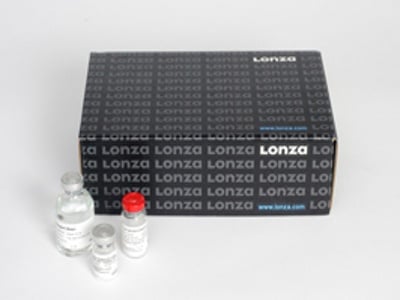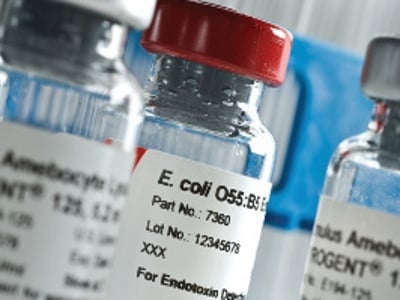Limulus amebocyte lysate (LAL) is an aqueous extract of blood cells (amoebocytes) from the Atlantic horseshoe crab Limulus polyphemus. LAL reagents are primarily used to test for endotoxins in injectable pharmaceuticals, biological products, and medical devices.
They are also used in renal dialysis centers and a wide range of other applications. LAL tests are described in the Bacterial Endotoxins Test chapter in the United States Pharmacopeia (Chapter <85>) and in the equivalent chapters in the European Pharmacopoeia (Chapter 2.6.14) and the Japanese Pharmacopoeia (General Tests, No. 4.01).
How does a LAL test work?
LAL reacts with bacterial endotoxin lipopolysaccharide (LPS), which is a membrane component of gram-negative bacteria. This reaction is the basis of the LAL test, which is widely used for the detection and quantification of bacterial endotoxins.
What kinds of LAL tests are there?
There are three main types of quantitative LAL tests that are widely used for BET:
- chromogenic
- turbidimetric
- recombinant Factor C (rFC) assays.
These assays can not only determine the presence/absence of endotoxin in a sample, but also reveal the quantity of endotoxin present. This data facilitates compliance to quality control (QC) testing and data integrity standards for a wide range of applications in pharmaceutical drug development and manufacturing.
|  |  |  |
| Company | Lonza | Lonza | Lonza |
| Item | Kinetic-QCL Kinetic Chromogenic LAL Assays | PyroGENT 5000 Kinetic Turbidimetric LAL Assays | PYROGENT Gel Clot LAL Assays |
| Citations | | | |
| Price | | | |
| Vendor Product Page | Company Product Page | | Company Product Page |
| Description | The Kinetic-QCL™ assay is a quantitative, kinetic assay for the detection of Gram negative bacterial endotoxin. A sample is mixed with the LAL/substrate reagent, placed in an incubating plate reader, and monitored over time (via WinKQCL™ | The PYROGENT™–5000 assay is a quantitative, kinetic assay for the detection of Gram-negative bacterial endotoxin. A sample is mixed with the reconstituted LAL reagent, placed in the incubating absorbance plate reader, and automatically | Gel Clot LAL (PYROGENT™) provides a simple positive/negative result and is most often mentioned in pharmacopeial monographs as the official referee test.
Lonza’s PYROGENT™ Gel Clot LAL Assay is a qualitative LAL test for Gram-negative |
| Method | LAL | LAL | LAL |
| Sample State | Inquire | Water samples, large volume parenterals and water rinse | Inquire |
| Analysis Time | Inquire | Inquire | 1 hr |
| Regulatory Compliance | Inquire | Inquire | Inquire |
| Sensitivity | 0.005 to 50.0
EU/ml | 0.01 to 100.0 EU/ml | 0.03, 0.06, 0.125, 0.25 EU/ml (depending on model) |
| Required Equipment | Incubating Plate Reader | Incubating plate reader | Inquire |
| Get quote | | | |